












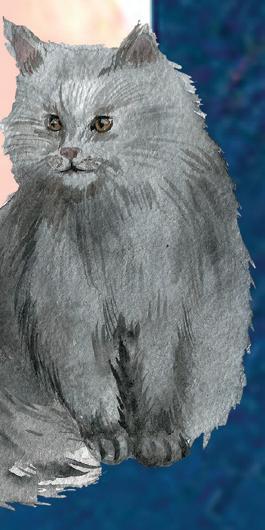

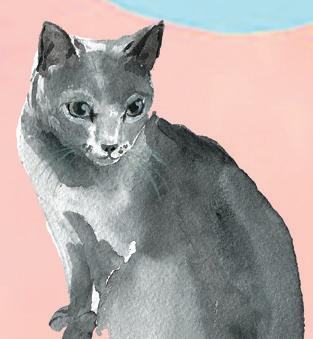

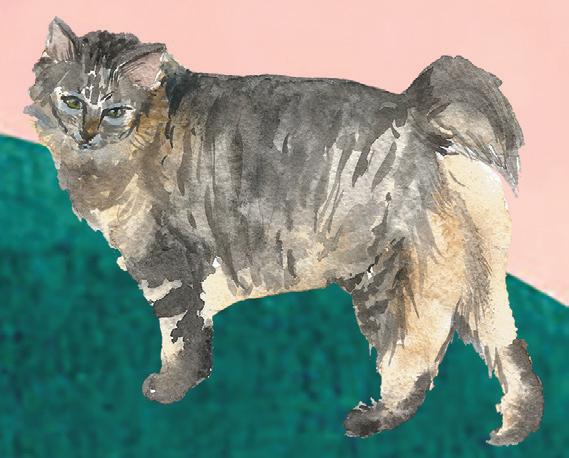
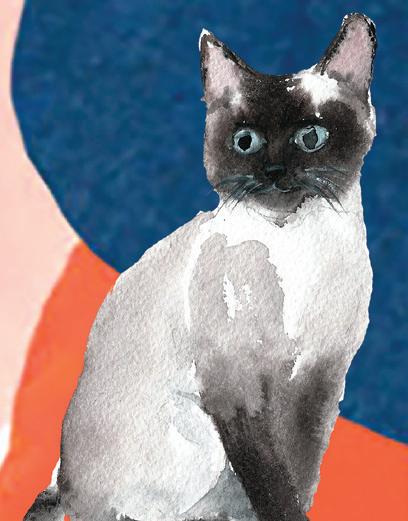

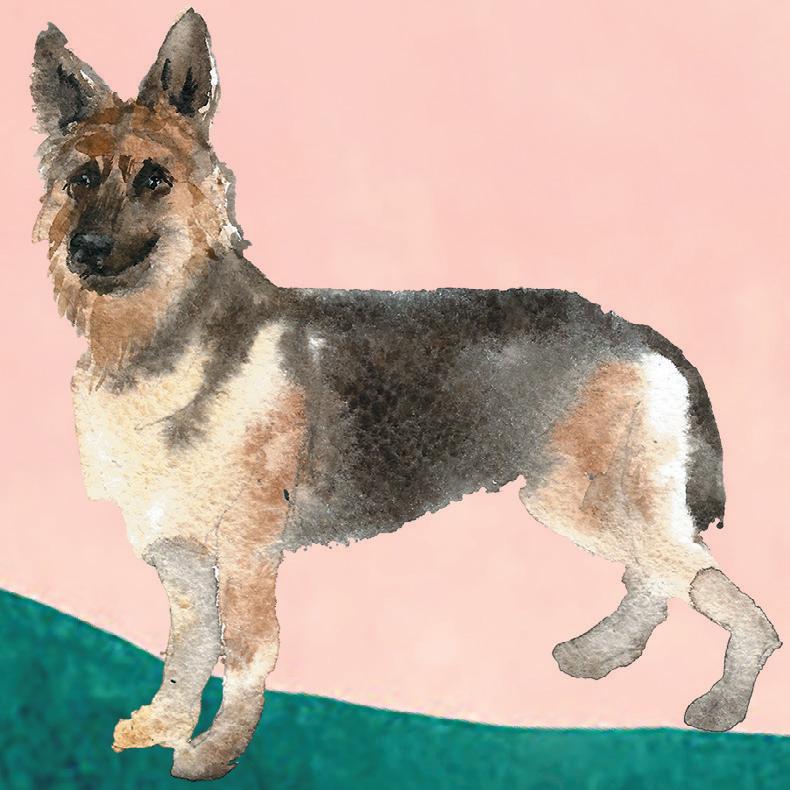

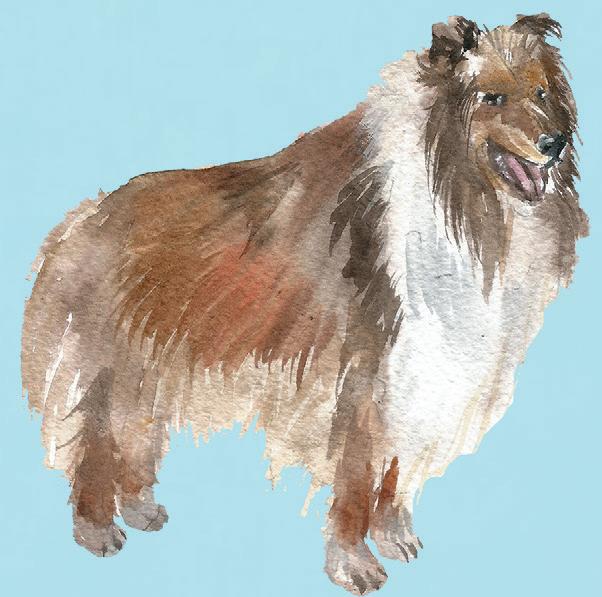
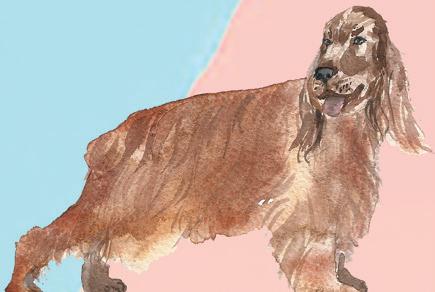

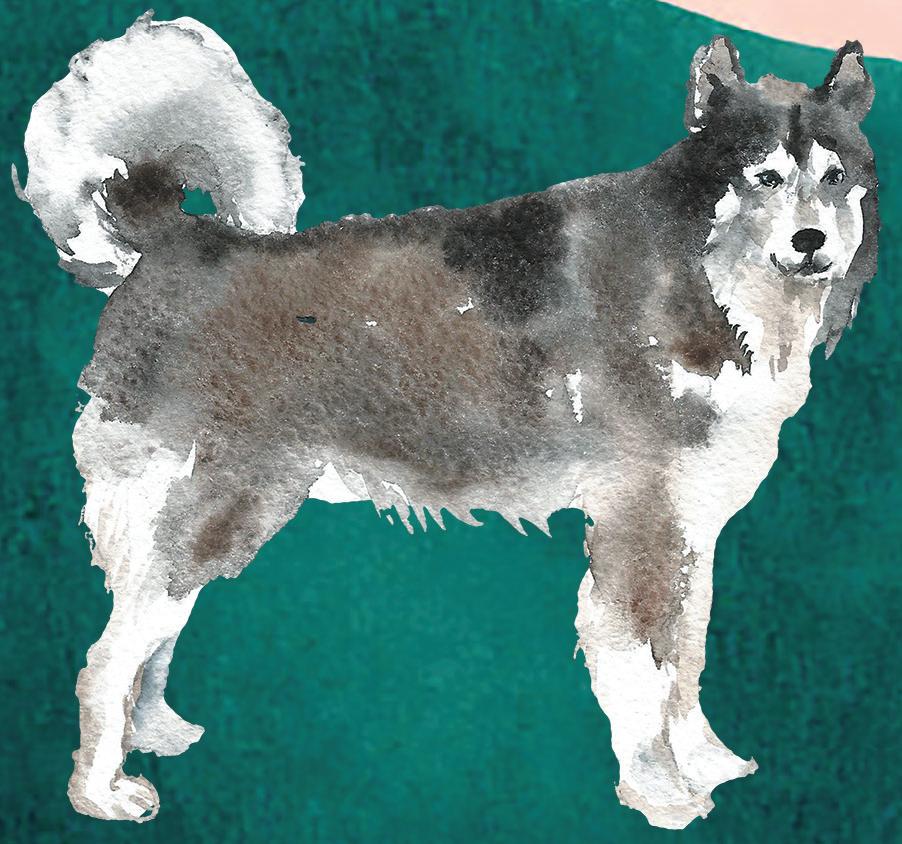

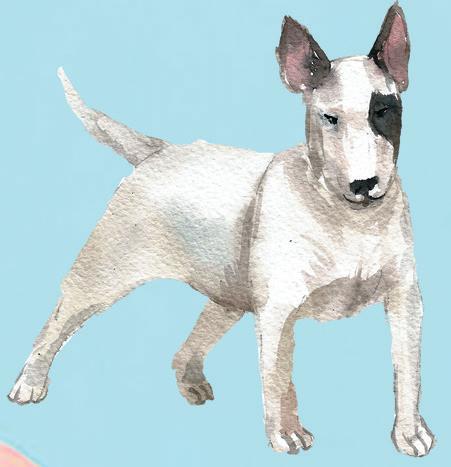
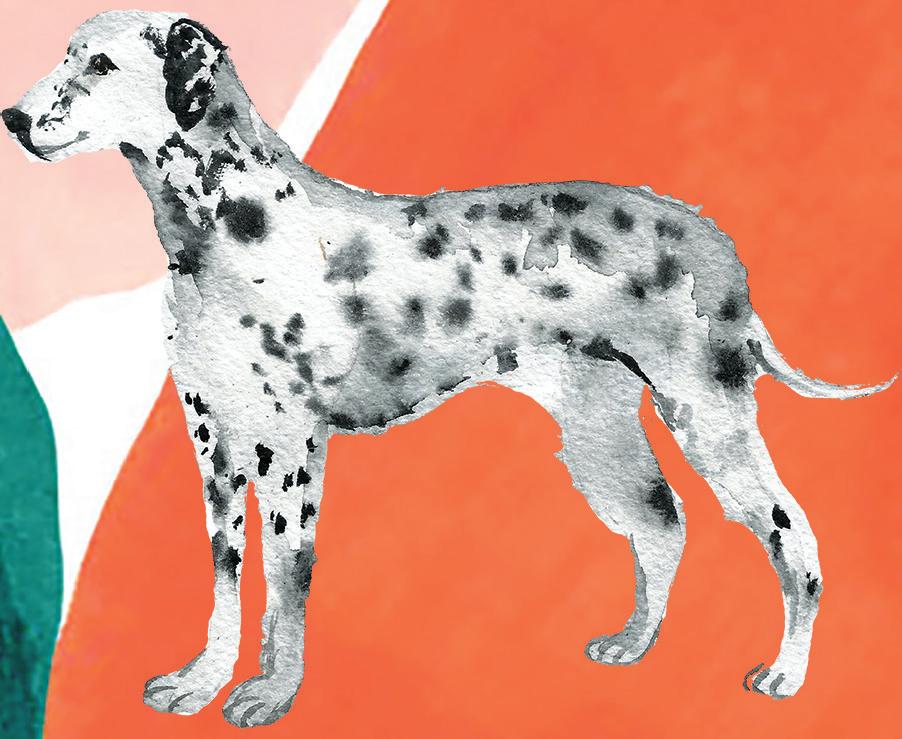

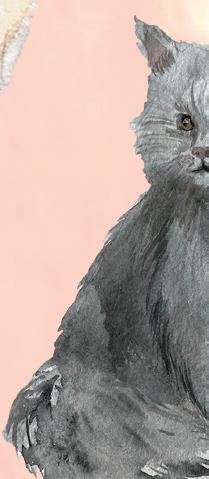

5
History Corner
We left you at a cliffhanger two issues ago, but Ridley Wills II is back to finish the story of Willis D. Weatherford.

































We left you at a cliffhanger two issues ago, but Ridley Wills II is back to finish the story of Willis D. Weatherford.






Carla B. could not be more thrilled to be this week's vendor spotlight as she discusses bouncing through life.
If you saw the Mothra cameo in Godzilla and were left wanting more, good news: Mill Creek Entertainment has released Mothra on Blu-Ray.
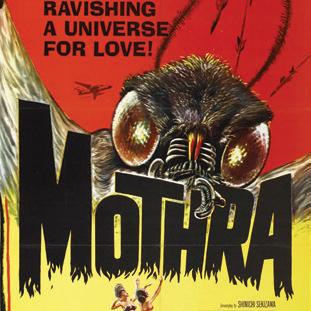


Our vendors write in this issue about dogs, God, first responders, dueling spoons and how summer vacation reminds us life's a beach.
Contributor Board
Cathy Jennings, Chair Tom Wills, Bruce Doeg, Demetria Kalodimos, Ann Bourland
Linda Bailey

• Amanda Haggard • Tom Wills • Hannah Herner • Alvine • Vicky B.
• Ridley Wills II • Bronwyn Orr • Aly Song
• Joe Nolan • Chris W. • John H. • Victor C.
• Mike P. • David "Clinecasso" C. • John G. • Norma B. • William "Spoon Man" B. • Julie B. • Mr. Mysterio • Cynthia P.






Cathy Jennings • Tom Wills • Joe First
• Andy Shapiro • Michael Reilly • Ann Bourland • Patti George • Linda Miller •
Deborah Narrigan • John Jennings • Barbara Womack • Colleen Kelly • Janet Kerwood • Logan Ebel • Christing Doeg • Laura Birdsall
• Nancy Kirkland • Mary Smith • Andrew Smith • Ellen Fletcher • Michael Chavarria
Will Connelly, Tasha F. Lemley, Steven Samra, and Tom WIlls Contributor
Editorials and features in The Contributor are the perspectives of the authors.
Submissions of news, opinion, fiction, art and poetry are welcomed. The Contributor reserves the right to edit any submissions. The Contributor cannot and will not endorse any political candidate.

Submissions may be emailed to: editorial@thecontributor.org
Requests to volunteer, donate, or purchase subscriptions can be emailed to: info@thecontributor.org Please email advertising requests to: advertising@thecontributor.org







Mailng Address
The Contributor P.O. Box 332023, Nashville, TN 37203
Editor’s Office: 615.499.6826 Vendor Office: 615.829.6829
Proud Member of:



Printed at:
Follow The Contributor:
Copyright © 2018 The Contributor, Inc. All rights reserved.

 BY TOM WILLS, CO-FOUNDER
BY TOM WILLS, CO-FOUNDER
The paper you just paid for was bought by someone else first, otherwise it wouldn’t exist. That’s how The Contributor works. A vendor who experienced homelessness paid 50 cents for this paper and then sold it to you. By buying it and taking it with you, you’ve just encouraged that vendor to buy another. BOOM! That’s the solution. Now keep reading. This paper has something to say to you.


Street papers provide income for the homeless and initiate a conversation about homelessness and poverty. In 2007, The Contributor founders met at the Nashville Public Library downtown to form one. In a strike of lightning we named it The Contributor to infer that our vendors were “contributors to society,” while their customers could contribute to their work. But, thunder from lighting is always delayed …
It took three years, but Nashville embraced us like no other city in the world. The Contributor became the largest selling street paper per-capita on the globe. And today 50 percent of our six months or longer tenured vendors have found housing. BOOM! The thunder has struck.

The Contributor is a different kind of nonprofit social enterprise. We don’t serve meals or provide emergency shelter. We don’t hire people in poverty to create products or provide a service. Rather, we sell newspapers to homeless people who work for themselves. We train them to sell those papers to you, keep the money they earn, and buy more when they need to replace their stock.
Our biggest fans don’t always get this. Like lightning without the thunder, they see the humanity of the vendor but misunderstand the model. Case in point: In 2013 during a funding crunch, a representative of one of Nashville’s biggest foundations exclaimed, “I’m such a big fan that I never take the paper!” We responded, “Well, that’s why we are in a funding crunch.” BOOM! Thunder was heard. Taking the paper makes our model work — not taking it breaks it. And selling the paper twice doesn’t just fund the paper, it funds housing and change. BOOM! Our vendors report their sales to qualify for subsidized housing and even for standard housing deposits and mortgages. They don’t consider your buying the paper a “donation.” It is a sale. When they sell out, they buy more and build the paper trail of a profitable business. Until making these sales, many of our vendors had never experienced the satisfaction of seeing their investment pay off. And when it does, it liberates! They have become “contributors” to their own destiny. And Nashville has become a city of lightning and thunder. BOOM! Now that you are a SUPPORTER , become an ADVOCATE or a MULTIPLIER You are already a SUPPORTER because you know that taking the paper makes the model work. You bought the paper and you are reading it. Now your vendor is one copy closer to selling out, which is exciting! Now you can become an ADVOCATE when you introduce your friends to your favorite vendor, follow us and share our content on social media, contact us when you witness a vendor in distress or acting out of character, or explain why others should pick up a copy and always take the paper when they support a vendor. And, you can become a MULTIPLIER when you advocate for us AND directly donate to us or become an advertiser or sponsor of The Contributor. Our income stream is made of 50-cent- at-a-time purchases made from our vendors, matched by contributions, ad sales and sponsorships from multipliers like you. Because our vendors are business owners, your donations are seed-money investments in their businesses and multiply in their pockets. Every donated dollar multiplies four-to-seven times as profits in the pockets of our vendors. Thanks for contributing.
El periódico que usted acaba de pagar fue primeramente comprado por alguien mas, de otra manera no existiría. Así es como funciona The Contributor. Un vendedor que está sin hogar pagó 50 centavos por este periódico y después se lo vendió a usted. Al comprarlo y llevarlo con usted, usted animo a este vendedor a comprar otro. BOOM! Esa es la solución. Ahora continúe leyendo. Este periódico tiene algo que decirle. Los periódicos vendidos en la calle proveen ingresos para las personas sin hogar e inicia una conversación sobre lo que es la falta de vivienda y la pobreza. En el 2007, los fundadores de The Contributor se reunieron en una librería pública en Nashville para formar uno. Y como golpe de un rayo, le llamamos The Contributor para dar a entender que nuestros vendedores eran “contribuidores para la sociedad,” mientras que los consumidores podrían contribuir a su trabajo. Pero, el trueno siempre tarda más que el rayo. Nos llevó tres años, pero Nashville nos acogió como ninguna otra ciudad en el mundo. The Contributor se volvió uno de los periódicos de calle más vendido en el globo. Y hoy el 50 por ciento de nuestros seis meses o más de nuestros vendedores titulares han encontrado casa. BOOM! Ha llegado el trueno.
JENNINGSThe Contributor es una empresa social sin fines de lucro muy diferente. Nosotros no servimos comida or proveemos alojo de emergencia. No contratamos gente en pobreza para crear productos or proveer un servicio. En vez, nosotros vendemos periódicos a las personas sin hogar para que ellos trabajen por ellos mismos. Nosotros los entrenamos como vendedores, ellos se quedan el dinero que se ganan, y ellos pueden comprar más cuando necesiten reabastecer su inventario.
Nuestros mas grandes aficionados no entienden esto. Como un rayo sin trueno, ellos ven la humanidad de el vendedor pero no comprenden el modelo. Un ejemplo: En el 2013 durante un evento de recaudación de fondos, uno de los representantes de una de las fundaciones más grandes de Nashville, exclamó: “Soy un gran aficionado, y es por eso que nunca me llevo el periódico.” Al cual nosotros respondimos: “Y es por esa razón por la cual estamos recaudando fondos.” BOOM! Y se escuchó el trueno! El pagar por el periódico y llevárselo hace que nuestro sistema funcione, el no llevarse el periódico rompe nuestro sistema. Y el vender el papel dos veces no da fondos para el periódico, pero da fondos para casas y causa cambio. BOOM! Nuestros vendedores reportan sus ventas para calificar para alojamiento subvencionado y hasta para una casa regular, depósitos e hipotecas. Ellos no consideran el que usted compre el periódico como una “contribución” pero más lo consideran como una venta.
Cuando se les acaba, ellos compran mas y asi logran establecer un negocio rentable. Hasta que lograron hacer estas ventas, muchos de nuestros vendedores nunca habían experimentado el placer de ver una inversión generar ganancias. Y cuando logran hacer esto, da un sentido de Liberación! Ellos se han vuelto contribuidores de su propio destino, y Nashville la ciudad de el trueno y el rayo. BOOM!
Ahora que te has vuelto nuestro SEGUIDOR, vuelve te en un ABOGADO o un MULTIPLICADOR. Ya eres nuestro SEGUIDOR, porque sabes que al llevarte este periódico sabes que esto hace que nuestro modelo funcione. Compraste el papel y lo estas leyendo. Ahora nuestro vendedor está a una copia más cerca de venderlos todos. Que emoción!
Ahora que te has vuelto nuestro ABOGADO cuando presentes a tus amigos a tu vendedor favorito, siguenos y comparte nuestro contenido en social media, contactanos cuando seas testigo de un vendedor actuando de manera extraña o fuera de carácter. O explicale a tus amigos porque ellos deben de llevarse el periódico cuando ayuden a un vendedor.
Te puedes volver un MULTIPLICADOR cuando abogues por nosotros, Y directamente dones a nosotros o te vuelvas un anunciador o patrocinador de The Contributor. Nuestra fuente de ingresos consiste en ventas de 50 centavos hechas por nuestros vendedores, igualadas por contribuciones, venta de anuncios, y patrocinios de multiplicadores como usted. Porque nuestros vendedores son dueños de negocios, las donaciones que den son dinero que es invertido y multiplicado en sus bolsas. Cada dólar donado se multiplica de cuatro a siete veces en la bolsa de nuestros vendedores. Gracias por Contribuir.

In 1915, William G. Frost, president of Berea College in Kentucky, came to Blue Ridge. At the end of his week-long stay, he told Willis D. Weatherford, “You are doing the same thing here that we are at Berea: combining work and study. I want you to join the board of directors at Berea.” The next year, Weatherford joined the Berea College Board and, for half a century, would give Berea his wise counsel. For 35 of those years, he was chairman of the board.
Weatherford continued as Student YMCA secretary for 17 years. In that period, there was no college in the South with a graduate program to prepare young men to become YMCA secretaries. Only two colleges in the country had such programs. They were George Williams College in Chicago and Springfield College in Massachusetts. As few young men from the South went to those colleges, there was a growing feeling among southern YMCA leaders that a permanent training school should be established in the South. Representatives of the state secretaries of the Southern YMCAs approached Weatherford about the idea and when he responded positively, asked him to consider being president of the school. When Weatherford was satisfied that he would have the support of YMCA secretaries in the South, he accepted.
Weatherford’s idea was that the school should be a graduate school and that it be named the YMCA Graduate School. Because he and Mary lived in Nashville, where they were members of Belmont Methodist Church, and where he had gone to college, he felt that the school should be located there. Consequently, Weatherford met with officials at Vanderbilt, and George Peabody College for Teachers. He told them his idea was to set up a four-quarter program of training with the summer quarter at Blue Ridge, and the three other quarters in the half-empty Wesley Hall at Vanderbilt that was occupied by the struggling School of Religion. Chancellor Kirkland and President Bruce Payne of Peabody agreed to cooperate and they and Weatherford worked out a plan under which graduate students from Vanderbilt, Peabody, and the YMCA Graduate School would take half their courses in the institution in which they matriculated, but were free to take their other courses in either of the other schools. For example, someone working toward a master’s degree in physical education at the YMCA Graduate School could take human anatomy courses at the Vanderbilt School of Medicine.
The YMCA Graduate School, chartered by the State of Tennessee to grant B.A., M.A.
and D. P. E. degrees, opened in 1919 in Wesley Hall on the Vanderbilt campus and remained there until 1927 when the school’s handsome new building on 21st Avenue south across from Wesley Hall was built, thanks to a loan from Vanderbilt, who sold Weatherford the property just north of Peabody Demonstration School. The YMCA Graduate School, also known as the Southern College of the YMCA, never had more than 10 or 12 professors but their students had access to Vanderbilt’s library. In retrospect, Weatherford wrote, “The arrangement was well nigh perfect in its advantages to the YMCA.” Several YMCA Graduate School faculty members went to Blue Ridge nearly every summer as did Weatherford’s old associates at Vanderbilt, Oswald E. Brown, Dean of the Vanderbilt School of Religion, and Edwin Mims, head of the English Department.
A member of the Vanderbilt Board of Trust later said that, had not the YMCA Graduate School taken over part of Wesley Hall, they probably would have voted to close the School of Religion.
The Graduate School D.P.E. degree program required 12 quarters of work, three terms of the academic year were taken at the Graduate School while the summer term was held at the Blue Ridge Assembly at Black Mountain, North
Carolina. The curriculum for the D.P.E. degree consisted of 180 credit hours and was heavily slanted toward medical education. Some of the courses were bacteriology, venereal diseases, anthropometry and physical examination, dermatology, anatomy, physiology and mental and nervous diseases. These courses were taken at Vanderbilt. D.P.E. students also took marching, gymnastic dancing, calisthenics, apparatus work, track, aquatics, football, basketball and baseball at the YMCA Graduate School.

While running the YMCA Graduate School, Willis had a personal medical problem. His wife Julia had contracted pleurisy and had to spend what turned out to be three years in a sanitarium in Colorado Springs. This left Willis to carry on in Nashville with their 8-year-old son, Willis, Jr. The loneliness for all three was awful. Julia conquered pleurisy and returned home to be a mother, wife and help her husband at the graduate school during the school year, and at Blue Ridge in the summers.
Because the promised funding from Southern State YMCAs did not amount to much, Weatherford became a highly effective, one-
man fund-raising machine. His determination and personal conviction kept the school open in the face of criticism of him for being too liberal, as well as the school’s lack of money. He also endured the scorn of others who felt he found his racial ideas intolerable. Weatherford’s students, however, loved him. One said, “He was a spellbinder.” Another said, Weatherford “was spellbound, rapt, tireless, drawing superhuman strength from his spirituality.”
By the 1920s, Dr. Weatherford was one of the most respected and effective YMCA leaders in the country. In 1923, when the International YMCA and the state associations were at odds, a constitutional convention was convened in Cleveland in October. On one side were advocates of “states rights” while the other group favored a strong central control by the International YMCA. The gulf between the two was thought to unbridgeable. Weatherford was one of three arbitrators asked to mediate the critical situation. After working three days and three nights, Weatherford presented their plan on the convention floor. Their proposal to combine a centralized organization with distributed responsibility was applauded. The plan was accepted by both sides and essentially became the structure, with modifications, under which the YMCA functions today.
Soon after the Cleveland convention, Weatherford wrote The Negro From Africa In America, published in 1924 by George H. Doran and Company. In 1965, Dr. George B. Tindall stated in his book, Writing Southern History, said that The Negro from Africa to America “remains the best survey of [black] history by a white writer.”
One of the highlights of Weatherford’s years as Southern YMCA College president came in 1925 when the Laura Spelman Rockefeller Memorial Fund pledged $25,000 annually over a five-year period to the school.
After Weatherford had purchased the site on which to build his college building, he received an attractive offer to accept a position as a full professor and chair of Christian Methods at Yale University. After careful consideration, Weatherford turned down the offer because of the large opportunity he felt he had at the Southern YMCA College in Nashville that he had poured so much energy into.
In 1925, there were 25 students at the YMCA Graduate School from 10 states and one foreign country. Practically all of them taught Sunday School classes, and most performed social work in Nashville, including directing boys’ activities at the Martha O’Bryan Settlement House and the Bertha Fensterwald Center.
In 1933, Julia became sick again. After hours of rest each day, she was able to come downstairs and even to participate to a limited degree in outside activities. While she was recovering, Dr. Weatherford had a hernia operation. One day, soon after he returned home from the hospital, their son Willis’ dog, a big, friendly German Shepherd, began acting strangely. Their physician recommended that Mrs. Weatherford, and Willis, Jr. take anti-rabies shots. Julia didn’t want to, but did so on the urging of her husband and physician. After her 13th shot, she lost consciousness and was rushed to the hospital. After hovering between life and death, she regained consciousness, but was paralyzed
from the waist down. Julia recovered some use of her upper body and legs, but that proved temporary and she remained partially paralyzed for the remaining 24 years of her life.
For the next three years Weatherford spent time and money trying to find a cure for his wife. He also struggled to raise funds for the YMCA Graduate School. By 1935, the school was unable to pay interest on its debt to Vanderbilt. The impending demise would cause great problems for Vanderbilt because its students used the Graduate School gym and swimming pool and received instruction from three Graduate School faculty members for $20 per student. For almost a year, Weatherford and Chancellor Kirkland discussed proposals for some kind of merger. Weatherford wanted to surrender the building
of the several professional educational ventures attempted by the Association.” In 1968, he had not changed his mind. That year, Hopkins wrote that the YMCA Graduate School “always seemed to me to be a statesman like effort of much greater significance than it has been accorded.”
After the Graduate School closed, Dr. Thomas Elsa Jones, president of Fisk University and a Northern-born, white Quaker, invited Dr. Weatherford to join the Fisk faculty. The challenge of working with black students was irresistible. He accepted. A puzzled department head at Vanderbilt asked Weatherford why he wanted to teach at Fisk. Weatherford said, “Because I’ve been interested in the race question for a long time and this is a chance to see what I can do about it.” The man turned away and
comed the suggestion and agreed to do so, with two stipulations. The YMCA would have to agree to raise the money to pay off his $74,000 indebtedness and make improvements on the building. The second stipulation was that the Southern associations would continue to use Blue Ridge as a religious training center for the people of the South. This came about and, in 1944, he severed his official ties with the center. Two years later, at age 71, Weatherford resigned from the faculty at Fisk, having been there ten years.
Two years later, Berea invited Weatherford to join their faculty in a special capacity. He did so and divided his time between Berea and helping his ailing wife in efforts that were described as “heroic.” One of his major responsibilities at Berea was to find prospective students. During the winters, he would go out into the snow-covered valleys and coves of East Kentucky looking for students. With the school approaching its 100th anniversary in 1955, Weatherford proposed to the Berea Board of Trustees that they underwrite a drama that would help the mountain people know their heritage and, indirectly, build a constituency of people who knew about Berea and its purpose.
The board agreed and in the summer of 1955 Wilderness Road opened in the handsome Indian Fort Theater three miles from the Berea campus. The trustees had by then invested $250,000 in the project. During that summer, applications to Berea increased by over 500. Wilderness Road ran for four summers and drew 160,000 in paid attendance, but still lost $25,000. Despite the fact that visitors coming to the drama often stayed at the college-owned Boone Tavern, one year nearly doubling the inn's summer revenue, the trustees voted to close the drama. Weatherford was disappointed but moved on.
Julia Weatherford suffered a heart attack in September 1957 and died a few weeks later. She had lived to see one of her five grandchildren, the oldest of four daughters and one son of their son, Willis and his wife, Anne. Her most cherished dream, a loving family for her son, had been realized.
to Vanderbilt if they would assume its $166,000 debt, and he could retain a right to repurchase the building later. Vanderbilt considered accepting this, but their attorney found that a second mortgage precluded a clear title. Finally, in 1936, Weatherford gave up and sought foreclosure. He managed to retire the second mortgage and late that year turned the property over to Vanderbilt for about $176,000 of cancelled debt. Vanderbilt renamed the building Wesley Hall after the original Wesley Hall that burned in 1932, and moved the School of Religion there. This seems appropriate since so many graduates of the School of Religion went into YMCA work.
The loss of the YMCA Graduate School was a serious blow to the entire association movement as the school had been a matter of pride to the national Y. A few years later, it was found that 80 percent of all the student YMCA secretaries in Southern colleges and universities were graduates of the YMCA Graduate School. Historian C. Howard Hopkins concluded in 1951 that the YMCA Graduate School “was the most challenging and possessed of the greatest potentialities
said, “Queer the choices some people make.”
Weatherford’s new position at Fisk was Chairman of the Department of Religion and Philosophy, He also prepared and introduced an introductory course in the humanities, the first such course taught at Fisk. In time, it became a required course for sophomores.
While teaching at Fisk, Weatherford continued to run Blue Ridge during the summers and to participate as a trustee at Berea and help the interracial Commission (ACIPCO) that he helped found. In 1940, he and Julia built a home they called “Far Horizons,” on a steep ridge, called Overlook, behind the Blue Ridge Center. They used native materials from 185 acres they owned there, including river-worn stone and poplar logs. Far Horizons became their permanent home. From their mountain home, at an elevation of 3,200 feet, they could see twenty peaks that rose 5,000 feet or higher.
In 1943, a committee representing the Southern YMCAs came to see Weatherford to ask him to consider turning the Blue Ridge property over to the Southern associations. Weatherford wel-
In March 1960, Willis D. Weatherford suffered a slight stroke. He hardly noticed and kept working on his latest book, The Southern Appalachian Region: A Survey. Published by the University of Kentucky Press in 1962, it was the story of many men and women, boys and girls that he had met in many decades of walking through the hills and hollows of Appalachia.
On Willis Weatherford’s 90th birthday in 1965, Dr. Alexander Heard, the brilliant young chancellor of Vanderbilt University, said of him, “His career has been long. His lifetime of labor for social justice, wider economic horizons, and better conditions of life for the people of our section has won enduring fame for him and lasting pride for his alma mater.” On Dec. 1, 1965, the Appalachian Regional Commission in Washington drafted a resolution congratulating Weatherford on his 90 years and pointing out that, “his ideas, his energy and his leadership have greatly aided in focusing national concern and attention on the region which now has been translated into action in the Appalachian Regional Development Act of 1965 and this Commission’s current program to develop the Appalachian Region.”
Willis D. Weatherford died in 1970 in his 95th year, having accomplished more after he turned 80 than most men do in a lifetime.
“His career has been long. His lifetime of labor for social justice, wider economic horizons, and better conditions of life for the people of our section has won enduring fame for him and lasting pride for his alma mater.”by Hannah Herner
On a two-block walk from 5th to 7th street, Carla B. greets six people along the way and hugs three of them. She’s extremely enthusiastic and outgoing. When she was told she could be this issue’s Vendor Spotlight, she broke into a happy dance. Having struggled with mental health, addiction and abuse on top of homelessness, Carla says dancing and singing, combined with her faith, help her “bounce through life.” She feels she’s in a good place now and is ready to build up her customer base where she sells: mornings in Donelson and afternoons in Bellevue.

for The Contributor
In 2010 I ran into a friend, he was selling The Contributor. He was telling me about it and I was like, ‘well I have a job.’ A couple of weeks later I got ran over by a car. So I went back to him and said: ‘How do I get in with this newspaper?’ He brought me down and showed me how to get The Contributor. So that was my job because I was disabled. I couldn’t work. The Contributor gave me a way to make money when I was not able to have a full time job.
You’ve written a number of pieces for The Contributor. Have you always enjoyed writing?
When I was 5 years old I won my first poem
contest at the library, and it’s always been my dream to be a published author. And I never thought that I could make it because I don’t have an education. But thanks to The Contributor, I have. This is so big for me.
What has your housing situation been like over these years and what is it like now?
Right now I am camping. It’s nothing to do with The Contributor or anything like that, the reason I’m homeless. I’m bipolar schizophrenic and I’ve spent most of this last year in the hospital. I had a home, I had it all, and the guy I was with broke up with me and I came back here. Since November of last year I’ve been in and out of the hospital and I don’t have a place to live, but I’m trying. I’m so glad The Contributor is helping with Section 8 now.
Something you talked about when you introduced yourself is how you love to sing and dance.
I love to dance. I was a cheerleader when I was a kid. I come from a long line of dancing. And thank God my daughter, she’s a dancer. She’s got my genes. She has been a cheerleader and a dancer all of her life … My mom taught me how to dance and I taught her how to dance.
That’s how all y’all know me, a little dancer. That’s how I get my customers and stuff because they see me happy and they want to get to know me because I’m always on my corner dancing.
I know I can’t sing. I know y’all have been lying to me, but I love it. I’m sitting at Church Street Park on my birthday and I started singing my song, and this preacher come up to me and said, "will you sing that again for me?" And he videotaped me by the library on my birthday and it’s on the internet.
That’s me. I’ve had such a hard life, I’ve learned how to bounce through stuff. And if I’m singing and I’m happy then people won’t know that there’s something wrong with me.
You wrote a Christian song that was published in The Contributor a while back. Does faith play a role in your life?
Not just my daughter’s name is Faith, my mom’s name is Faith. So I feel like my parents gave me faith the day I was born. I’m a Christian, and I walk by faith, not by sight. Faith is a very big deal in my life ... I didn’t know the meaning of it growing up, but I know now. I know that as long as I believe in him and put him first, everything is going to be OK. And I know He’s the one
who gave me that song. That song means a lot to me. You can’t imagine how many people have heard that song. All the bus drivers heard it.
What kind of interactions do you like to have with people who buy the paper from you?
I like my customers to know my name and I know their name. I love talking to them and their kids and their dogs. Me and Ms. Liz, she used to volunteer [at The Contributor], and in 2010, I was coming up here to get papers, and she said ‘Hi Carla! can I take a picture of you?’
I said, ‘why would you want to take a picture of me?’ and she said, ‘because you show the joy of being a vendor.’ And she’s been my customer ever since. I can leave and come back and she’s always there. I’ve had some really amazing customers. I miss them. I miss my old customers in Bellevue. I’m very friendly. I’m a waver, I love to wave. Everybody, once they get to know you, they care about you, like you start caring about them.
Is there anything else that you want to add?
I just want everybody to know how The Contributor can change everybody’s lives and make their dreams come true. I’ll leave on that note.

Mario, a longtime Contributor vendor, has always loved dogs. In fact, he says they saved his life. At a low point in Mario’s journey, he was living in a truck with his dogs, feeling ashamed and embarrassed and unsure about where his life was going.

“One night I thought about ending it all,” Mario says. “But I looked at my dogs and saw them looking back at me and I knew that nobody would love them the way that I was able to. They needed me and that was enough.”

Mario always had dogs growing up, but at one point he was traveling so much that he had given up on the idea of having them. He was a videographer who traveled the world shooting stories with different country music artists.
“I did that for a decade or more before I decided to get off the road,” Mario says. “When I started cleaning log houses in really rural areas is when dogs started coming back into my life. It was like they just came to me.”
Mario says sometimes he would pick up res-
cues that people left out in abandoned areas, but his most well-known dog, Bear, he got because he saw someone about to take him to the shelter. A woman living in a house he was cleaning got a Great Pyrenees not knowing how large they would get and was putting him in the car when Mario asked if she was taking him to the park.
“She said: ‘Oh no, I’m taking him to the shelter, I can’t have this dog in my house,’” Mario says. “And she told me I could just take him if I wanted to. I just about screamed ‘NOOO’ when she told
me she was taking him to the shelter.”
Most people who read The Contributor knew Bear as Mario’s selling sidekick. When Bear passed away last fall, the community to set up an impromptu memorial at the spot where Mario sold the paper. People placed flowers, photographs, stuffed animals and balloons at his spot
on Lebanon Pike to honor Bear. Channel 17 did two stories on Bear when he passed, and other news outlets also noted his passing. Mario named his successful lawn mowing business after Bear: Bear Care Lawn Service.
He was 11 years old when Mario lost him.
“He was a great dog — sort of hard to imagine anyone getting rid of him — not only was he well behaved, everybody knew him,” Mario says. “I would be in Donelson, Hermitage, Smyrna or Clarksville and people would ask: ‘Is that Bear?!’”
Upon Bear’s passing, Mario wrote a beautiful tribute to his friend: “As many of you may already know bear passed away last Friday the day after Thanksgiving from cancer. That was the saddest day of my life — the happiest day is when he came into my life. Bear gave me 11 years of happiness, joy, peace, support and most of all his love. Bear and
I were pretty much inseparable we were together almost 24/7. Bear was my life my love my son my rock. I never knew what a strong bond was until he came into my life. I love that dog more than anything in the world. Bear was more than just a dog he was my hero. I was so proud of him I love taking them everywhere sharing him and showing him off because he was so beautiful so friendly and so loving.”
Mario says Bear was “famous” out in the world, but at home, Bear sat back in the pack. Bear was humble, and didn’t brag too much about being the star, he says, laughing.
“Selling The Contributor and realizing that this was a job and that Bear was a great marketing tool, I began to really understand how important he was to my sales,” Mario says. “It just helped me tremendously. Bear was in the limelight, but at home they were all equal.”
He still had two dogs and a cat at home when Bear passed — Murphy, Little Boo and Missy — and he wasn’t quite sure he was ready to take on
another dog. He still missed Bear and didn’t want to fill the void with just any dog.
“A gentleman approached me and said he found the perfect dog for me,” Mario says. “But I was hesitant. But when I saw him — he was just a pup — I just really fell in love. The guy wanted me to name him Yogi, but I’m always thinking of names I can do nicknames with so I thought on it a while and decided to name him Rocky.”
In a social media comment after Mario got Rocky, someone asked if the photo he had posted was of his new dog and Mario replied: “This is Rocky. I've had him for three weeks now. He was given to me by some guy that thought I would like him. And he was wrong ‘cause I love him.”
The bond was immediate, but it took him a little longer to name Rocky than his other dogs. Little Boo got his name because when Mario was living in a barn, the dog came up in the pitch dark and “scared the heck out of” him. Murphy was found on Murfreesboro Road. Bear was, well, huge. He loves the name Rocky because the nicknames
are endless, Mario says: rockstar, Rocky Balboa, rock-ola, rockster.
Mario says his connection to dogs has only grown stronger over the years — he feels he’s meant to take care of them and be a friend to them. When he’s home with his dogs, he says he feels they understand him on a deep level — that they sense his feelings and know him as well as he knows them.
“Everybody knows they’re stress relievers,” Mario says. “ And they can offer you unconditional love. You come home and they don’t care if you’re late, if you don’t call to say you’re late, if you're a little drunk, as long as you come home. That’s all they care about — they’re going to love you and jump on you and lick you and say: ‘WE’RE GLAD YOU’RE HOME!!!’”
He says all his dogs have always felt like his protectors: He cares for them and they’re there for him.
“My dogs have always been an inspiration and it’s been fun to see how each group of them I’ve had has inspired me in different ways,” Mario says.
“With my new crew, I’m starting a new chapter.”
If you think your dog looks stressed out, it might be your own stress levels that are affecting your pet pooch.
A study published in Nature’s Scientific Reports shows pet dogs may synchronize their stress levels with those of their owners.
More than just being “man’s best friend,” it appears our pet dogs may be mirroring our mental state too, and that can be bad for their health.



It’s all in the hair
Swedish researchers studied 58 dogs — 33 Shetland Sheepdogs and 25 Border Collies – as well as their owners. The dogs selected were balanced for sex, breed and activity level.

Both dog and owner personality was assessed through standardized personality questionnaires, with owners fi lling out the Dog Personality Questionnaire on behalf of their pet.
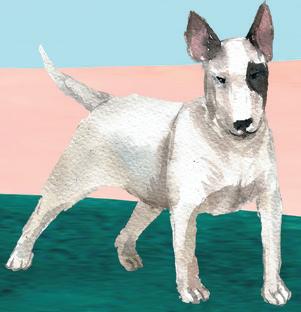
The researchers also measured the hormone cortisol in the hair of dogs and their owners over a yearlong period.
Cortisol is a measure of physiological stress, which can be raised during mental distress. But it’s also elevated for short periods such as during exercise and illness.
Hair cortisol is a good way of measuring long-term trends in stress levels, as hair grows
BY BRONWYN ORRslowly and absorbs circulating substances from the blood.
The results showed a significant correlation between human and dog cortisol levels across the year. In 57 of the dogs in summer and 55 in winter, cortisol levels matched those of their owners. This means that for these dogs, their cortisol levels rose and fell in unison with their owner’s.
Dog activity levels or dog personality did not influence this correlation. It was, however, influenced by owner personality. Owners with higher stress levels tended to have dogs with higher stress levels too.
Female dogs had a stronger connection with their owner’s stress levels compared with male dogs. Previous studies have shown that female dogs (as well as rats and chimpanzees) are more emotionally responsive than males.
There’s also evidence that increased oxytocin (the love and bonding hormone) in female dogs results in increased interactions with their owner, causing a corresponding increase in the owner’s oxytocin levels. This effect wasn’t seen in male dogs.
A limiting factor to the new study was that it did not identify any causes of elevated stress


in the dog owners. But what it does show is that regardless of the cause of the stress, our reaction to it impacts our dogs.
Researchers have long discussed the concept of what is called the “human-dog dyad,” a close bond between humans and dogs. This relationship, developed over 15,000 years, is unique in the animal world.
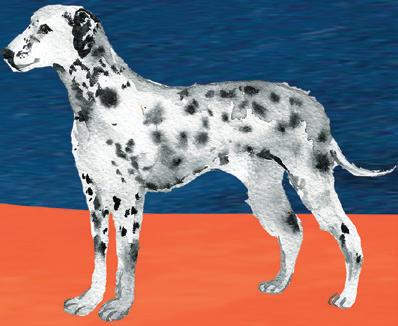
There is evidence to suggest dogs evolved alongside us and consequently are in tune with our emotions and bond with us through eye contact.
Although many aspects of this inter-species relationship are positive (particularly for us), it’s likely there are some drawbacks to this close relationship with dogs.
Like many animals, we can share diseases with our dogs such as the superbug MRSA and Q Fever.
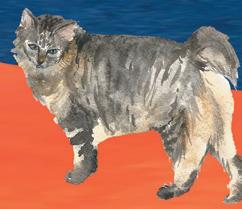


We know that failing to providing basic care like food and shelter is cruel, but we often overlook how disregarding the mental lives of our pets can also negatively impact their welfare.
Dogs are sentient animals. This means they
can experience both positive and negative emotions, such as pleasure, comfort, fear and anxiety.
A poor mental state, where a dog is regularly experiencing negative emotions such as anxiety, can lead to poor animal welfare. If owners have an impact on the stress levels of their dogs, it means we also play a role in protecting their welfare.
The impact we have on our dog’s stress levels goes both ways — positive and negative. If we reduce our own stress levels, it’s likely we will also reduce our dog’s stress levels.
We know chronic stress is bad for both humans and dogs as it increases the likelihood we will get sick as well and decreases our quality of life.
If you don’t work on decreasing your stress levels for your own sake, perhaps you will do it for your dog. There are great resources available for decreasing stress levels, and the good news is that some of them, such as getting out in nature, can be done with your dog right by your side.
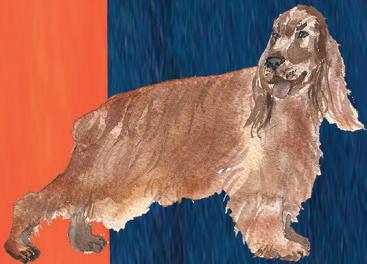
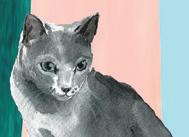






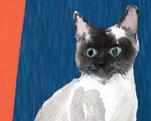

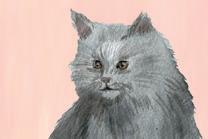 BY ALY SONG
BY ALY SONG
Pet owners in China are turning to acupuncture to help soothe the aches and pains of their beloved cats and dogs.
"China is famous for acupuncture. I took the cat here immediately to have a try," said Wang Xijuan, 74, holding the paw of her feline friend during a session at a Shanghai clinic.
After four treatments, Wang said her cat can "walk now, jump and even fight with other cats.”
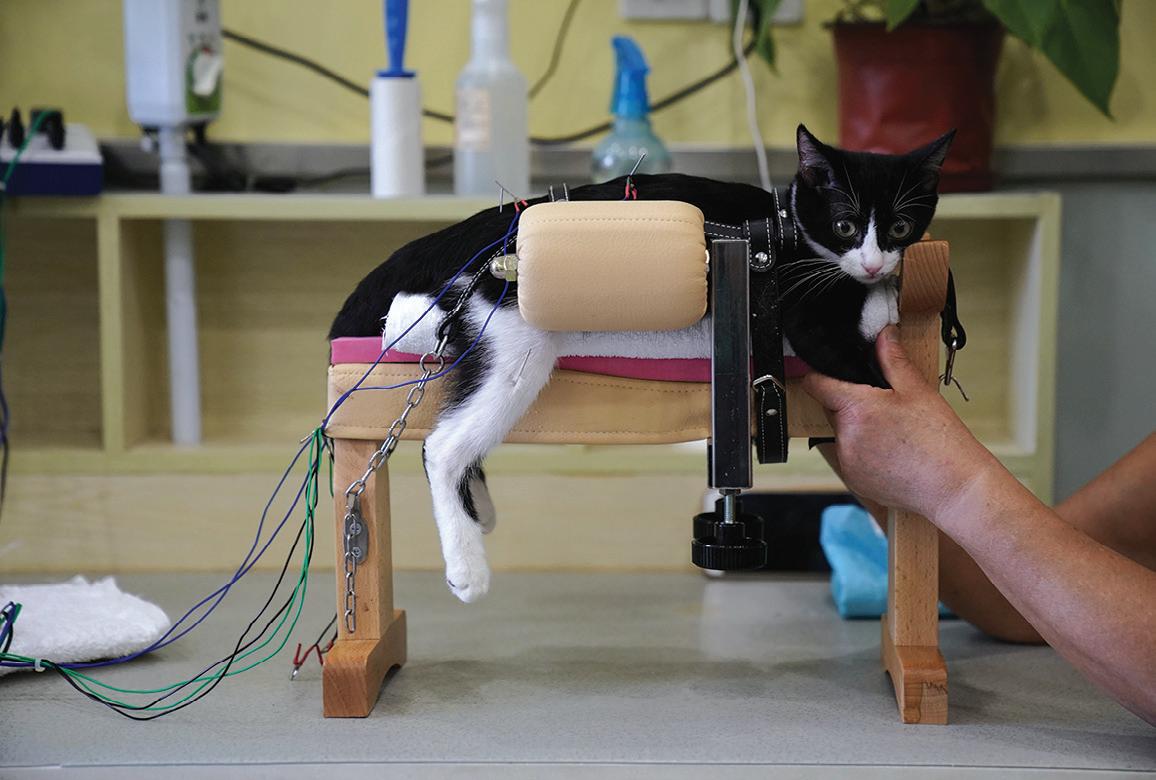
Traditional practitioners believe acupuncture, which involves inserting long, fi ne needles at specific places, known as meridians, of the body, can stimulate blood circulation to promote healing and relieve some aches and pains.
On its website, the International Veterinary Acupuncture Society said acupuncture has been used in veterinary practice

in China "for thousands of years to treat many ailments,”

Jin Rishan, a specialist at the Shanghai TCM Neurology and Acupuncture Animal Health Center, said they have treated more than 2,000 cats and dogs since the clinic opened four years ago.


A single session costs about $39 and lasts for about 45 minutes.
Jin said about 80 percent of their patients have shown some improvement after treatment.
"Making a paralyzed and dependent dog stand up is our ultimate goal," Jin said.
Courtesy of Reuters / INSP.ngo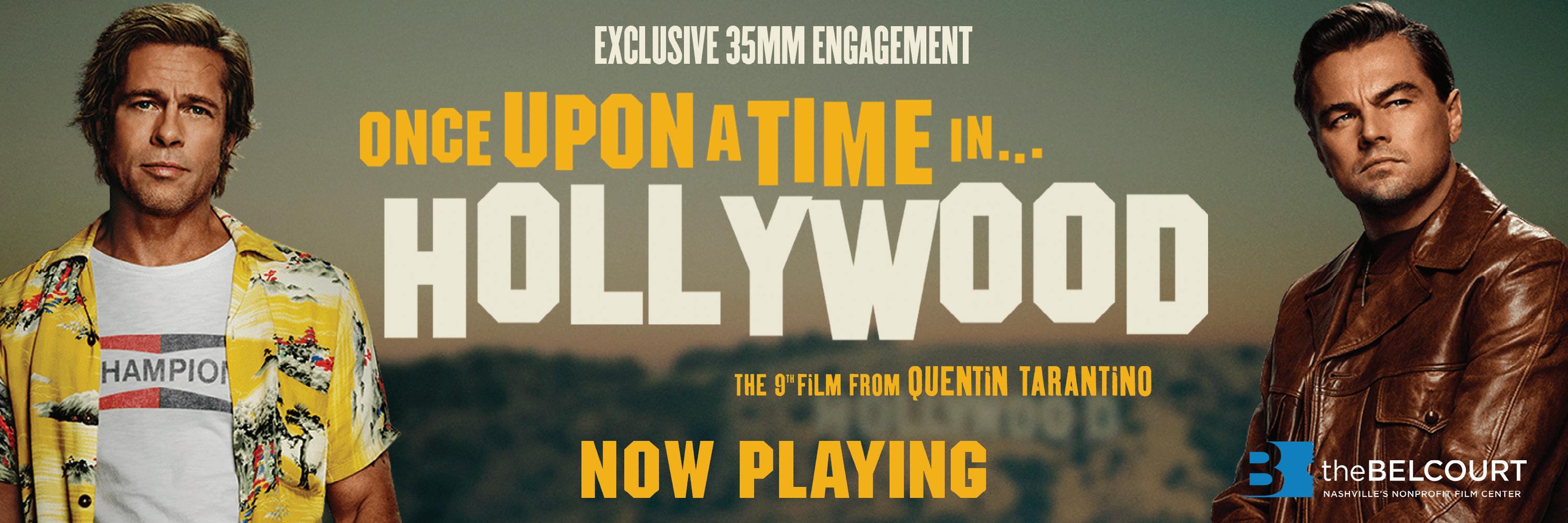
The 2019 summer movie season got off to a roaring start when Michael Dougherty’s Godzilla: King of the Monsters came stomping across cinema screens at the end of May. Along with the lizard king, the film included an all-star cast of kaiju greats like Rodan and Gidorah along with a menagerie of original monsters resembling everything from massive mammoths to giant arachnids. But the most surprising turn for any of these creatures is the appearance of Mothra the giant moth, who is fabulously feminized here, but also made more deadly and connected romantically to Godzilla himself.
That said, Mothra’s screen time amounts to an extended cameo that likely left some viewers wanting, and that’s why Mill Creek Entertainment’s new Blu-ray release of the original Mothra (1961) film feels so timely.
Mothra, directed by Ishirō Honda, the legendary kaiju (Japanese giant monster movie) master credited with a number of movies in the Godzilla franchise including Rodan (1956), Ghidorah, the Three-Headed Monster (1964) as well as the original Godzilla (1954). Mothra’s production is lavish by contemporaneous standards, and Mothra’s extravagance is
emblematic of the Japanese film industry at the peak of its power. The film’s all-star cast includes The Peanuts, a Japanese vocal group consisting of twin sisters Emi Itō and Yumi Itō, who play the telepathic twin fairies, the Little Beauties. Mothra has since become a beloved movie monster in Japan, second only to Godzilla himself. She’s appeared in seven Godzilla sequels and even got her own trilogy in the 1990s.
In the original film an international expedition sets-off to Infant Island — an atomic bomb test site — following reports of a human population living in the irradiated paradise. The expedition discovers an indigenous tribe, and the tiny fairies who watch over their god — a giant egg. The expedition’s leader attempts to exploit the so-called Little Beauties by making them perform in a Tokyo
stage show before the great egg on Infant Island begins to crack and all hell breaks loose.
One of the biggest weaknesses of Godzilla: King of the Monsters is its unbelievable acting performances – which can probably be at least half-blamed on its also lame scripting. Mothra stands-out for the opposite reasons: the scripting here is brisk and tight and it manages to usher us into its monstrous weirdness quickly while also connecting compelling characters animated by dynamic performances. Frankie Sakai was a popular comedian and jazz drummer when he joined Mothra’s cast to play journalist Zen'ichiro 'Zen-Chan' Fukuda. Sakai’s knack for physical comedy and scene-stealing-mugging bring a welcome comic tone to the proceedings, and Akira Kurasawa muse Kyōko Kagawa brings a composed gravitas to her role as Michi Hanamura — a liberated, single lady photographer. Most notably, Jerry Ito’s turn as baddie Clark Nelson is deliciously dastardly and played with a flourish that points to Ito’s resume as a theater stage star.
Mothra distinguishes itself from other kaiju fare due to its spellbinding bending and blending of genres. Mothra is first and foremost a kaiju flick and it delivers the goods with wonderful monster miniatures and costumes, and countless model buildings, roads, dams, and military vehicles to be smashed and scattered. But, by turns, Mothra is also a sci-fi film, a fantasy, a musical, and even a political satire. There is also a fairy tale tone to much of the film and the overall feel of the movie is distinctly feminine compared to nearly all other giant-creatures-attack flicks.
The new Blu-ray release features both the Japanese and American versions of the film on a single disc. Both versions include 11 minutes of bonus footage, and the excellent commentary track is provided by Japanese sci-fi historians Steve Ryfle and Ed Godziszewski. The whole package is wrapped-up in a gorgeous SteelBook and slipcase emblazoned with gorgeous movie poster graphics proclaiming Mothra to be the “MIGHTIEST MONSTER IN ALL CREATION.”
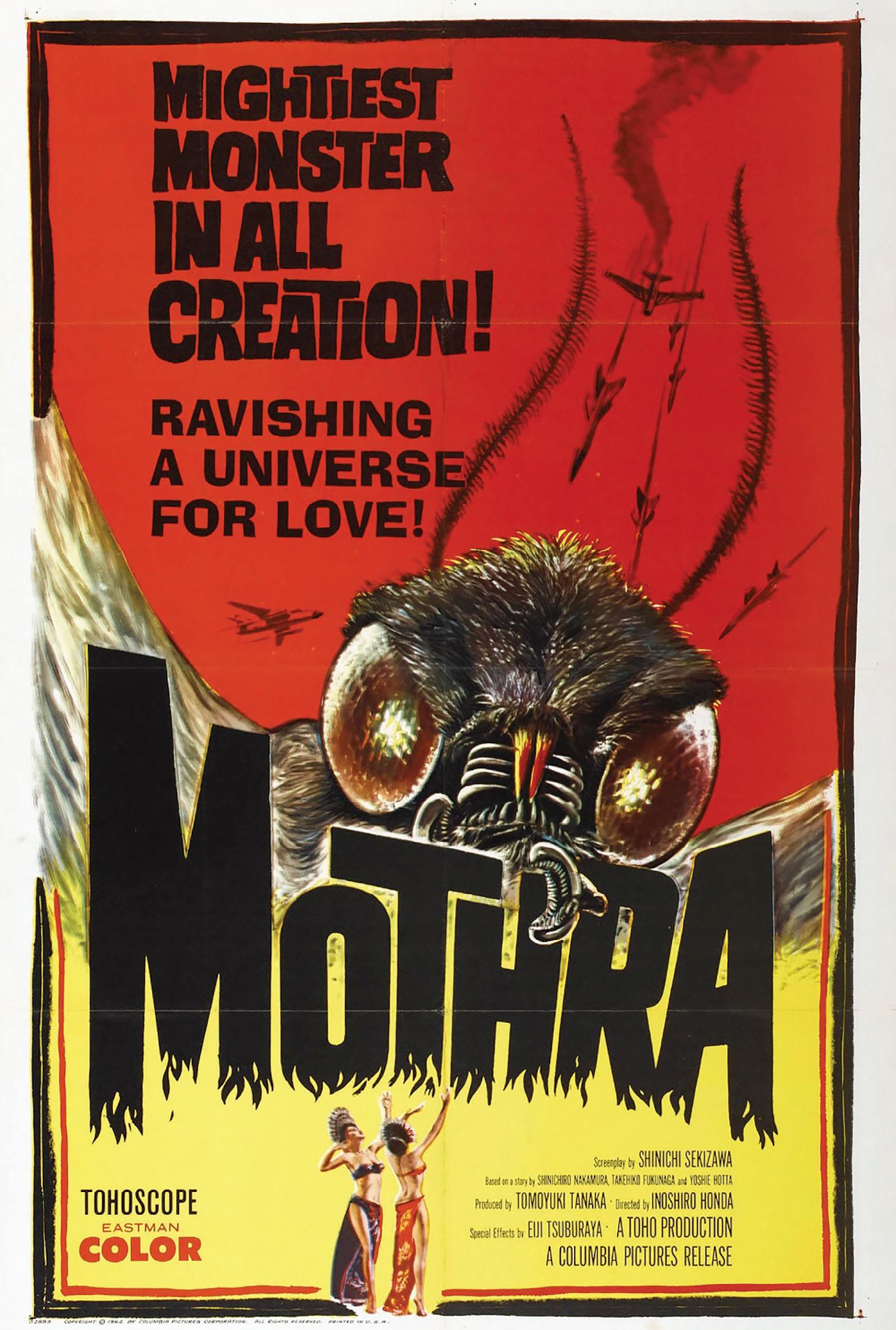
"Why don't they just get a job?"
"Why don't they just move into housing?"
"Why don't they just get out of our space?"
"Why don't they just get out of our sight?"
Why don’t they just? Why don’t you just? are regular questions in our human service work. There is often an idea that changing one’s situation, or circumstance, is as easy as simple human will. However, if change is that easy, why don’t we just do it?
The power of hope is an amazing catalyst for change for both individuals and communities. When there is hope, which we measure, there is a greater likelihood of change. Seems obvious to most, right? If you want to increase change, then you have to increase hope. But how do you increase hope: share good stories, show a different way of life, or promise we will not have to do it alone? Yes. Yes. And Yes. Hope can be
increased. But be careful, hope can be despairing when hope is not realized.
Why don’t you just? Is actually a question that a community struggles with more than an individual. For example, there are national best practices for life navigation data that can streamline persons displaced to the streets to housing solutions but Nashville does not maximize the opportunity. There are evidenced-based practices of how to move our most vulnerable neighbors into housing at a cost-savings to taxpayers but policymakers are slow to share the burden of housing that they collectively created. Around the country, health care respite homes are decreasing the number of persons dying alone on the streets.
In progressive cities, quality of life processes are reducing the regular weekly rotations of police and jail through justice that connects mental health services, addiction services, and housing opportunities for their neighbors.
“Why don’t they just…?” is a fair question.

If the evidence is solid and the paths are clear,
why don’t communities just acknowledge our collective responsibilities to our neighbors? Or, why don’t communities save themselves money and increase their own quality of life by helping their neighbors with theirs?
I contend it is the fundamental attribution error. When I do something right, it is because I am pretty awesome and work hard. When you do something right it is because you are pretty lucky and a privileged position. When I do something wrong, it is likely that someone else messed me up. When you do something wrong, it is pretty likely your fault and you should live with it.
What if we change the conversation a bit? What if we just… so others can too?

If we as a community do not have the power of hope, the will or the commitment of resources to create our own community quality of life, then how do we judge the persons in our community who follow our lead?

Thankfully, there is power in hope. The Salvation Army has been serving alongside our
neighbors in that power since 1890. We will continue to fight for good. Let’s create more new stories. Let’s create more new opportunities. Let’s fight together for peace, safety, and happiness for all of our Tennessee neighbors.
Let’s help those living on our streets stop asking…
“Why don’t they just?”
Major Ethan Frizzell serves as the Area Commander of The Salvation Army. The Salvation Army has been serving in Middle TN since 1890. A graduate of Harvard Kennedy School, his focus is the syzygy of the community culture, the systems of service, and the lived experience of our neighbors. He uses creative abrasion to rub people just the wrong way so that an offense may cause interaction and then together we can create behaviorally designed solutions to nudge progress. Simply, negotiating the future for progress that he defines as Quality of Life in Jesus!
I have a build like Arnold, all muscle bound. But not all the women do I see around. In all of the movies his arms are so big, But here is the problem, I look like Arnold the pig!
Why do humans get upset and want to kill?
When I’m upset, I find God and sit back an chill
Just like walking blindfold in a herd of cattle Give it to God, let God fight your battle
Taking one’s life, doesn’t make you a man Do the right thing, ask God to hold your hand Give it some thought, have a closer walk with thee That’s why he give his life, ‘cause he loved you and loved me
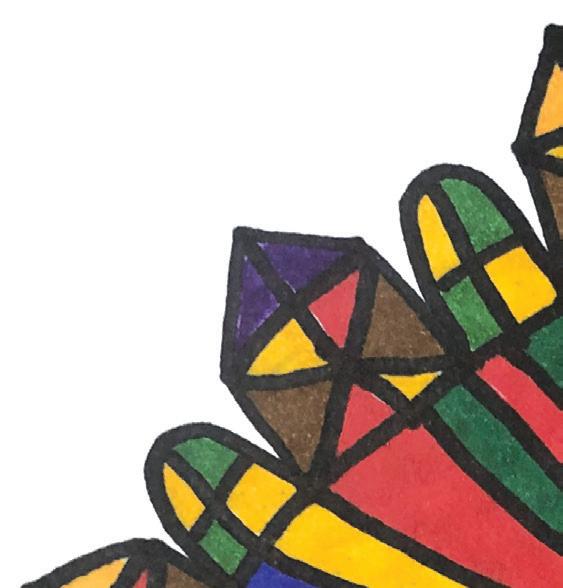
On Sunday, July 7, as I was changing a sunk tire on my car and putting a new spare tire on, the back fell and pinned my fi ngers underneath the car. My wife came out there and tried to lift it up, but she couldn’t so she called 911. The fi rst responders were out there within four minutes. They used the jaws of life to lift it up slowly. The 911 operator had told my wife not to do anything because it could cut my fi ngers off . So they came out there, calmed me down, put me in the

ambulance and took me to the VA hospital. My wife rode with me too.
At the hospital I found out I had broken my ring finger and maybe my wrist. When I came home, I saw the fi re department had put my work tower back up, put my walker in the truck, put the hood down, cleaned up everything and locked the door. They went beyond the call of duty.
It was just amazing how fast they got there. They were efficient, too because if circulation doesn’t get to your fi ngers, you can lose them. It could
have been worse, but I think they saved my fi ngers because they got there quick enough and they were efficient in what they do. So I went and took a picture with them and thanked them. They were all, “don’t mention it.” They were really really great.
Not everyone appreciates what the police and the fi re department do. They don’t realize what they do. People don’t really thank them. A lot of people do, but some people say, “oh that’s just their job.” But they don’t have to do some of the things they do.
People do things in life good or bad because they want to. Jesus died for us not because he had to, but he wanted to.
Today’s the best day of your life because: You’ve never seen it before!
BY DAVID "CLINECASSO" C . ,FORMERLY HOMELESS VENDOR



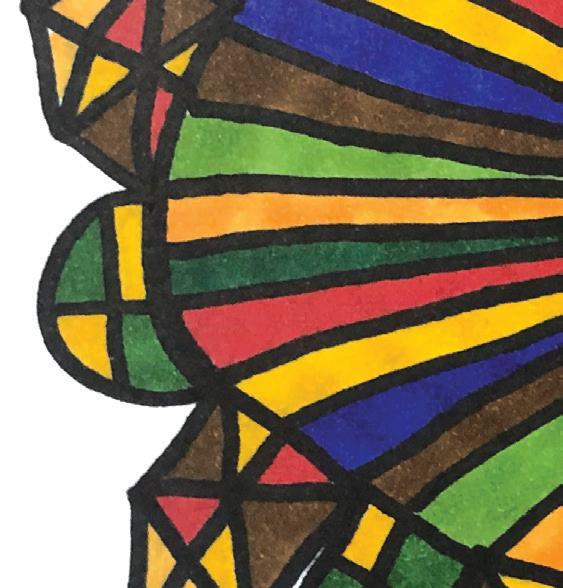
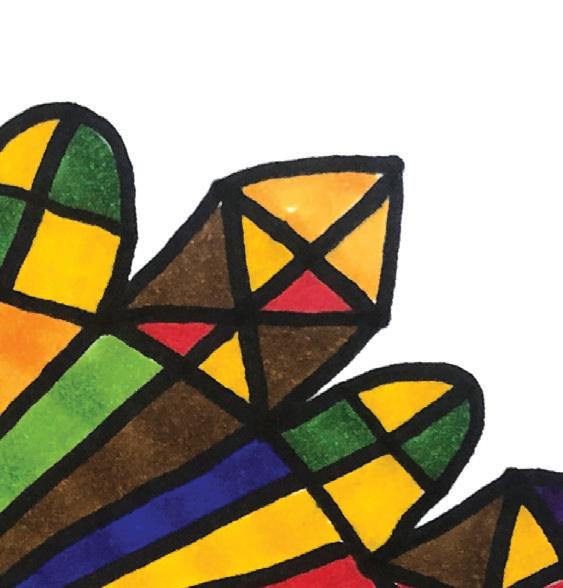

This summer I had an opportunity to go to the beach in St. Augustine, Fla., thanks to all those points I racked up during my “extended stay” at a local hotel. During this trip, I learned a few things not just about myself but people in general.
First, life’s like a beach in that all sorts of people go to the beach and make their way into the ocean. Without fail the waves come. Some
big, some small, and it doesn’t matter about your level of experience. Novice to pro, eventually a wave will come and knock you off your feet or in some cases off your board.
In spite of this inevitable fact, the majority of us will still get up and try again and again knowing the outcome will most certainly be the same.
What’s the benefit of such a seemingly pointless endeavor? Each time
you withstand the waves crashing against you, even when they knock you down again and again, when you get back up again you’re a little stronger; a little more able to take more than you ever thought possible.
Another interesting fact about life at the beach: It rains at some point nearly every day! Sometimes it comes down soft and gentle, no big deal. Other times it comes down so hard
I’d like to challenge Abbie the spoon lady (if she can get this message) to a “spoon off.” In banjos they call it dueling banjos, so in spoons I’m going to call it “dueling spoons.” I also play forks and butter knives so let’s call it “dueling forks” and “dueling butter knives” also. I would like to see if Abbie and any other spoon players would like to get together in Nashville. Get the word out there and see what you can find out for this old man here. I’m 70 years old and I’ve been playing for 61 years. Sometimes I make a little money playing — not a whole lot. It’s not about the money with me. I just love doing what I’m doing. I sell newspapers for The Contributor in Nashville. I write stories, I tell jokes, and
I sing a little bit and play the spoons. This is my life now. Number one is my Lord, Jesus Christ. Number two is my family. Number three is my music and my life as an entertainer and as a vendor for The Contributor. I would love to hear from friends. I would love to hear from Abbie and any other spoon player out there who would love to have a spoon off. If you can get in touch with anybody like that, please email The Contributor at editorial@ thecontributor.org. Tell them William B. (badge number is 4828) sent you. I would love to hear from you. Thank you very much and you have a very blessed day and a very blessed life. In Jesus name I pray for all of y’all. Amen.
When I was homeless and disabled
I was denied entry to a Nashville shelter for having a service dog. They still discriminate against people like me. They
pick and choose who they want in their shelter. Do people really want to support a place that discriminates against people who are disabled and their service dogs?
and from every conceivable direction you’re forced to seek shelter and hope that it passes quickly so you can once again enjoy all the beach has to offer: sun, sand, and of course, the ocean.
Whether it does or it doesn’t pass quickly that day makes no difference. One thing’s for certain: The sun will eventually come out again and when it does the people will once again flock to the beach in the
hope that somehow today will be different, better than the one before.
So if you feel you’re being knocked around by “the waves” in life, or if you’re caught up in a perpetual rainstorm, take heart, you are stronger than you realize. No matter how big life’s problems seem the sun will eventually come out again — sometimes accompanied by a rainbow to remind you just how beautiful life can be!
Do we, I mean do we really love him? Do we obey his word? It’s something that many of us Americans should consider and take very seriously each moment of our day. Many times I take a good look at everything God has blessed me with and it’s just amazing. God loves us so much. Even though we go and be bad children (sinners), he still loves us. Many of us say we love him but in all sincerity, we don’t.
Ya see, many of us can’t seem to love our neighbor. I speak about this in my articles a lot, simply because there’s much hate here in our city for our neighbors. I’ve traveld the whole U.S. many of times and this area alone, hate has an awesome life. God said if we couldn’t love our neighbor we couldn’t love him, we are far away from him. This is truth that should’ve been preached in all American churches 2000 years ago. In 1 John 4:19-20 God said, How can you
love him whom you’ve never seen, and you can’t love your brother whom you see every day. Many say my articles are harsh, but it’s just the truth. God’s truth.
Just the other day a man asked, “when do you plan to start back to driving truck, John?” I replied, “well! I see much more of God’s work that needs to be done here in this area. Love needs to be taught very badly here in this city, not only in this city, the whole state. As God’s speaking to my heart, the subject of loving God and one another should be preached and talked about more often. If not, for many, eternal life with Christ is critical (unlikely). Not loving your neighbor is something for many years, since the beginning of America, has been taught. Many are “brain washed” more than others. On that last day, I play each and every day, that many will have to ask God to change their heart. Do it today. Time waits for no one.
It is sad that people like me have to sleep on the streets because people like that have no heart or even sympathy to let someone like me in their shelter. They are breaking the ADA law, which should come with penalties. Please don’t support a place that discriminates against people like me and other people like me that have service dogs that need a place to stay when they are homeless and have nowhere to go.
How many others have they turned away like me? How many others have they discriminated against and turned away because these places think they
can get away with it. Nashville should be saddened that they have a shelter in their city that discriminates against people like me and their service dogs. They call themselves “faith-based” and “people of God.” God don’t like ugly and God gets the people that are mean to others. And Karma's real. It comes back and gets you back 10 times over. Do you really want to support people like that? People that don’t have a heart or even care about people and that want to pick and choose who they let in their shelter?
Do you really want to support some place that discriminates against
disabled people and their service dogs? Please don’t support and don’t give to any shelter that discriminates against people like me. Save your money or give and support someone that needs it. Don’t support uncaring, unloving, vindictive people that turn people like me away. These people don’t need to be in charge of anything. Please don’t support and give to any place that discriminates against people like me and my service dog.
Please write in to the paper and I will answer your questions:
Editorial@thecontributor.org
The Greek playwright Aeschylus was famous for writing trilogies of tragedies. He became successful in his own time, but his own life took a turn for the tragic when a soothsayer told him that a falling object would one day kill him. He became obsessed with outrunning his fate. So much so that he took to living outdoors in open spaces. One day while he was standing alone in the Grecian countryside, an eagle flew overhead and dropped a turtle on his head, killing him. In some ways, Leo, you’ve got the same fate coming as Aeschylus. Not the bit about the eagle or the turtle or even falling objects. But we know that all lives end. So what will you do until then? You could run away and focus on avoiding death at all costs. Or you could live your life completely and let your fate come how and when it may.
Maybe I’ve been stagnating. I stare out at the pool of water in the empty flowerpot on my back porch. It’s all murky and swampy and full of mosquito larvae. I feel like that. My amateur astrology skills have gotten rusty, behind the times really. So I’ve decided to sign up for a class at the local community college: “The Elements of Astrology” with Professor Steve Conundrum. It can’t hurt to polish-up on my basics and see where I’ve gotten behind. What about you, Virgo? Is there anyplace where you could stand to get back to the core and hone your craft? Any skills you’ve let fall by the wayside? Don’t let stagnation slow you down. Find a starting place and sign up.
Everybody loves an Oreo cookie. Ever since they debuted in 1912 they’ve been a popular favorite and a staple treat for all occasions. Well, come to think of it, there is somebody who doesn’t love Oreos. The Sunshine Co. introduced Hydrox Cookies in 1908. Those little black-and-white sandwich cookies were crispy and creme-filled delights that the public loved. Four years later Oreos arrived on the scene with superior factories and better retail connections and suddenly Hydrox found itself in second place. It wasn’t fair, and so Hydrox adopted the approach of saying so. All their marketing became focused on being “the original” and not letting customers “be fooled by imitations." While they focused on the competition, Oreo just focused on success. You know you’ve got the better idea, Libra, and you know you had it first. But instead of yelling about your originality and superiority you have to get out there and show it.
You know that reality show where they take people who have had terrible plastic surgery mishaps and they give them more plastic surgery to fix everything? I mean, of course I don’t watch it either, but it’s really fantastic. OK, I’ll admit it. I’ve seen a few. I guess what I like about it is that they start with peo-
ple who feel like they’ve really blown it people who have had terrible discount tummy-tucks and bargain facelifts. They take people who feel ruined and they make them feel human again. It’s a good lesson for you this week, Scorpio. Whatever terrible mistake you think you’ve made, there’s somebody out there who can help. Don’t keep it to yourself. Ask around until you find somebody who can help or they put you on a reality show.
So I’m all signed up for my “Elements of Astrology” class at the community college. The list of supplies and books is sort of daunting. I guess basic astrology has changed a lot since I did my mail-order correspondence course 10 years ago — back then it was all charts and history. This list just has me downloading a bunch of apps and buying tools and books I’ve never heard of. I guess things change, Sagittarius, and it’s important to stay equipped. This is a good week to get yourself up to date. Sure, you’ve been getting by doing it the old way, but there’s no reason to stay out-of-date. Try it the new way this week.
It was a dark and stormy night. Can you picture it? No, Capricorn, even darker and stormier than that. Yes, everybody loves a little neo-noir every once in a while—black-and-white detectives and their leggy double-crossing clients, a clue found down by the reservoir, a shot ringing out in the darkness. But maybe it’s time to send all that darkness running back to the corners of the room. Maybe this case is more easily solvable than you thought. Quit fumbling around through the mysteries and flip on the light switch. The answers might be right in front of you.
The first westerners to see a giraffe named it the “camelopard” because it had a face and legs like a camel but it’s colors and spots reminded them of a leopard. Similarly, the word “hippopotamus,” essentially translates to “water horse.” When we encounter something new, Aquarius, our only option is to compare it to what we already know. When you come across something strange or new this week, don’t get overwhelmed or run away. Instead, try to think about what you can compare it to. Start with something you know and you’ll be able to take on what’s next.
I downloaded the syllabus for my “Elements of Astrology” class at the community college. This Professor Conundrum sounds pretty tough. I’m supposed to read half a book before my first session. Class hasn’t even started yet and this is more homework than I’ve had in years. But prep-work is important, Pisces. And that goes double for you. You’ve got that list of things you need to do before you
can really get going. This is a good week to knock the whole list out. No more waiting around. Do your homework.
Lets cut straight to the diagnosis, Aries. You’ve got “senioritis.” True, it’s a condition that is much more common in the springtime, but late-summer cases are not unheard of. It’s a myth that senioritis is only experienced by the young and graduating. You may find that you’re experiencing feelings of anxiety over still being in a place where you’ve already finished all your goals. You might find you have an inability to do even the simplest tasks that you used to finish quite readily. You may experience worry over what you’re going to do next. That’s all perfectly normal. The good news is that senioritis has a 100-percent rate of recovery. You’ll get through this, you’ve just got to wait it out. And what’s next is going to be better than you’d hoped.
As a Hoboscope subscriber, you’ve come to enjoy our excellent bi-weekly programming at an affordable rate. And now we’d like to improve your experience even more with this special offer. For every friend you convince to switch to Taurus, we’ll give you 10 percent off your next bill. Think about all those discontent Scorpios and Geminis you know who would love the kind of razor-sharp predictive experience that you get here every week. Ask your friends about switching to Taurus. Because if everybody was a Taurus, the stars would have a lot less work to do.
My first class astrology class at the community college was a little rough. I assumed my years as a practicing amateur astrologer would have put me at an advantage. But it seems like things have changed since the last time I cracked a book. All these young kids with their predictive iPad apps and star-chart savvy smartphone skills. But as Professor Conundrum says, “We’re practicing an ancient art and this new tech is only a tool.” Remember, Gemini, that as much as things have changed, there’s nothing really new under the sun. If technology helps, that’s great, but you can always strip things back down to the basics.
A tiny teacup shatters beneath a heavy hoof. A delicate saucer splits on the hardened point of a horn. A single snort from a flaring nostril fogs the glass before the case is smashed into a thousand shards. I know you’re familiar with the imagery, Cancer, but are you the china shop in this story or are you the bull? You can be fragile, it’s true, and so you need to take care of yourself. But don’t stop there. Who might you be stampeding over this week? Keep your dinnerware close this week, and take care. But don’t forget to watch where you step as well.
Mr. Mysterio is not a licensed astrologer, a trained confectioner, or an adjunct faculty member. You can email Mr. Mysterio at mrmysterio@thecontributor.org, or check in on Twitter at twitter.com/mrmysterio. This set of Hoboscopes first ran in August 2014.





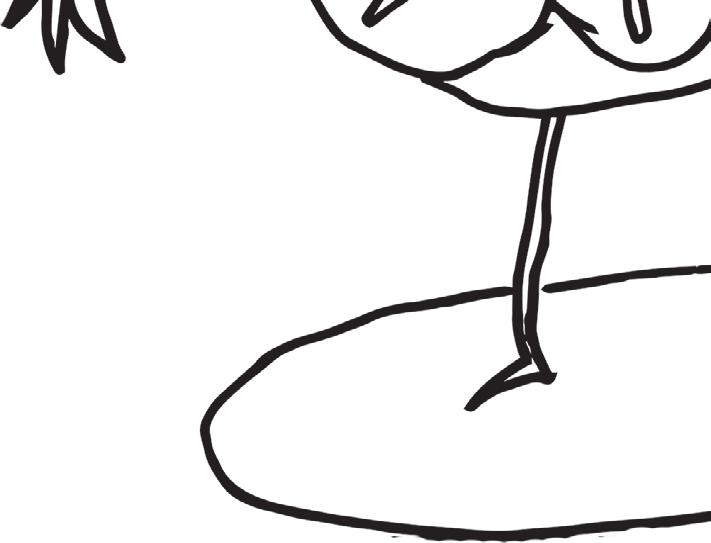





Before we became homeless we adopted Faith from Metro Animal Control. She was four weeks old and weighed in at 3.4 lbs. This itty bitty fur ball curled up on a pillow in a cage stole my heart right away without even realizing the impact she would have on my life. I’ve had pets before — from rabbits to cats to birds — but this little one, white with patches of golden yellow hair mixed in, has been the most special one in my life. She inspires me with her unconditional love. I can step up into the RV and she greets me with kisses and tail wagging each time — unless she’s pouting about being out of treats! I can come back in a bad mood and there she is so happy to see me it makes me forget what I was mad about.
I see through online posts and people’s comments that it’s awful to put an animal through the dreaded heat of summer and the bitter cold of winter. Our pets — service animals and emotional support animals — are our family. To get rid of them would be like cutting off our arm or leg. We’d be disabled without them. Even before we were homeless we loved them and considered them family. Pets are also our way of feeling loved and missed. Some people have even said that we’d have it so much easier without pets, and I respond with, “No, I wouldn’t.”
When we lived in a hotel we were being charged $10 a day extra for having a pet. It was suggested to me to have her registered as a service


 B Y VICKY B ., CONTRIBUTOR VENDOR
B Y VICKY B ., CONTRIBUTOR VENDOR
animal, but with her exuberance for attention she’s still more puppy than ever and she’d have to go through training and that costs money we didn’t have. With a heavy heart I tried to find her a good home, but I found something much greater. Dezarhea, a Facebook friend, suggested that she be registered as an Emotional Support Animal, a pet that comforts their human owners. Well, in a nutshell, that described what Faith already did do for all of us. I started looking into it and decided that we couldn’t afford both the extra $10 a day and the fees. Dezarhea suggested that she provide a foster home for Faith while we wait for the paperwork to come in. Six weeks without Faith. How could I ever do that? Dezarhea said she could bring Faith over for visits. But I was
skeptical. We’d had someone foster our cat, TJ, and he was given away without our knowledge.

I met with Dezaraha in the parking lot of the hotel and Faith just started loving on her, easing my mind about letting Faith go. Off they went with me in tears and Faith’s head staring out the back window. I think I cried for two hours and texted Dezarhea a million times before I finally went to sleep that night. I stayed busy and worked selling the paper a lot to keep my mind off Faith being gone. The six weeks seemed to go by so slowly, but when Dezarhea brought Faith by for a visit the entire hotel seemed so pleased as well as me. The visits were short, but I was so thankful for them.
I’ll never forget that day when Paul went up to the office and came running back with the much
awaited envelope with Faith’s papers in his hand, yelling, “Make the call and get her back here!”
Faith was having so much fun with Dezarhea. She had a fenced yard to play in and a friend named Henry to play with. Pictures sent weekly were so much fun to receive and see she was happy. You see many times I’ve thought about giving Faith up to give her a better life until I realized that she was happy with us. It wasn’t 20 minutes after I made the call and in pulled Dezaraha with Faith in the passenger seat tail wagging. She was home for good this time. Out she jumped and started running around and jumping on me. What a gift we were given not only in Faith but the gift of a home for her until she could be with us all the time. I see Dezarhea from time to time in her FedEx truck driving to a destination and I thank her every time for the gift that I could never repay. That’s how much our pets mean to us and add to our lives. Instead of a “Beware of Dog” sign on the door of the camper I’d like to have a “Must Love Dogs” sign! Faith isn’t just a dog; she’s family — never forgotten and never left behind. Some ask me why I’m not hooking up with a guy and I simply respond with, “Why should I? Faith gives me all the love I could possibly want or need.” She doesn’t leave her dirty clothes lying around, she never says an unkind word and she greets me everyday!







